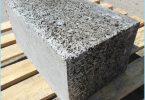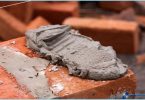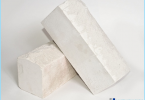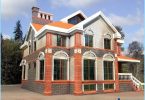The contents
- Losses and consumption of material for plaster walls
- Consumption of basic materials of plaster on the wall square
Construction or repair has always been associated with the consumption of construction materials. Most often due to incorrect use or incorrect ill-considered calculation of norms of consumption of bulk materials to prepare mortar and plaster walls. The more building, the more you can control the required volume of all the components, from bricks to complex additives in cement material.
Losses and consumption of the material for plastering the walls ↑
Most often we buy bagged material in industrial production of cement, lime, components of dry mix plaster. Less sand, more often sold «live weight», but for critical finishes of the walls can be washed and bagged material, no lumps and stones.
Loss of construction material formed in the plaster wall as a result of:
- The technological shrinkage of construction material, especially in the case of non-recommended brands of cement;
- Increased consumption due to the violation of preparation technology;
- Loss and expense associated with moving construction material from one site to another;
- Regulatory waste in the plaster of the walls due to debris deposited on the wall of the mortar, undercuts layers of plaster tool remnants on the utensils for mixing.
Without going into details of definitions of all the components, we can estimate a total volume of five liters per hundred liters of solution, i.e., about 5%.
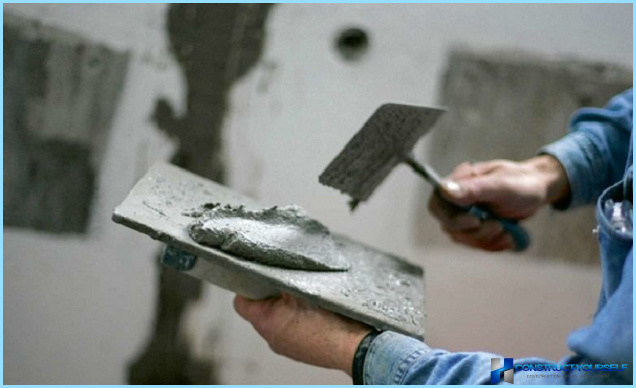
Most importantly, the manufacturer almost always indicates the consumption of material mTwo basic operations on masonry or plaster walls, and the recommended proportions in the manufacture of the solution. Starting from the average figures for the consumption mTwo, it’s safe to be costing.
Consumption of basic materials of plaster on the wall square ↑
To determine the expected required volume of materials required to accurately estimate the size of the walls and surfaces under the application of the plaster mass. Even the new wall can have a mass of curves, areas and defects that you plan to mask with plaster. Therefore, in different parts of the thickness of plaster will vary from a few centimeters to a dozen millimeters.
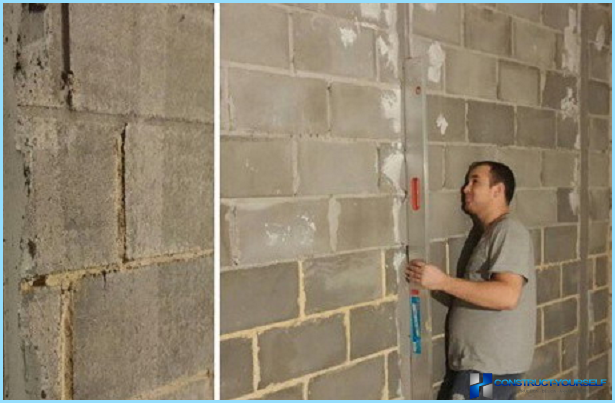
Evaluate the exact values of the surface area ↑
It is not necessary to assess the required amount of plaster into mTwo walls, which is called, «the eye». It’s easy to make a mistake and spend money on obviously unnecessary amount of material for walls.
If the plaster and finishing work will be executed hired workers, due to incorrect requirement calculation of the solution on the mTwo they will save the material and earn up to half of the agreed rate. For example, the tariff for the plaster mTwo is 400 rubles., with a maximum «save» due to incorrect calculation of the workers will get from 150 RUB out of your pocket because of the overuse of cement.
The main condition of validity of the calculation of the flow rate on mTwo is measurements only after the installation of the beacons-guidelines that will shape the future imaginary new surface of the plaster wall.
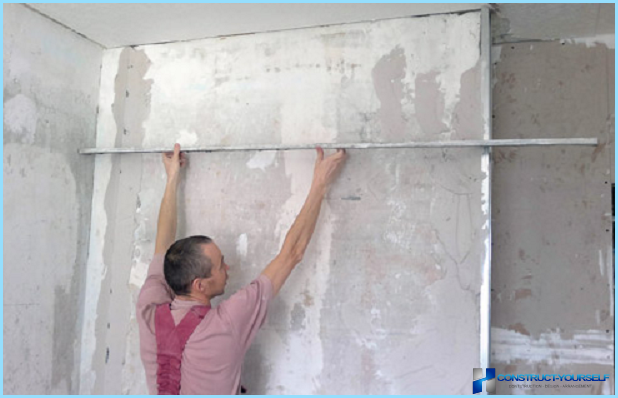
In addition to the beacons, it is necessary across the width of the wall to pull at least four horizontal lines, from one corner to the other, lines should slightly touch the guide beacons.
The method of calculating the flow on mTwo relatively simple, and much depends on the thoroughness of measurement:
- Along each of the lines 5-7 points, measure the distance from the scaffold to the surface of the old wall, the more measurement points, the more precisely we define the plaster mass consumption on mTwo;
- For each of the lines determine an average value by adding all results and dividing by the number of measurement points. For example, at five points the results obtained – 4 cm, 4.5 cm, 5 cm, 7 cm, 3 cm total dimensions 4+4,5+5+7+3 23,5 cm, divide by 5 and get an average value of 4.7 cm.
- Further, similarly summarize the obtained average values for each of the lines and divide by the number of strained lines. For example, we have stretched the five average values were as follows: 3 cm, 4 cm, 4.7 cm, 5 cm, 6 cm Amount 3+4+4,7+5+6 equal to 22.7 cm, divide by the number of lines and get the desired of 4.54 cm, or 0,000454 m and 0.46 DM.
- Multiply the measured area of the wall under plaster in mTwo and DMTwo to calculated the average number and get the total volume of plaster cubes and liters by multiplying by 0.46 DM by 100 to get the average consumption in litres of plaster on mTwo wall.
Calculation of plaster for the walls ↑
On the basis of the calculated values of required flow amount of plaster onto the wall square take into account the complexity of the works in the ceiling of the walls. Most often it is associated with risk of exfoliation or partial deformation of the layer.
Therefore, what you have set 5% of the normative technological losses rationally add 2% to flow rate for plastering complex and hard-to-reach sections of the wall. It is obvious that the flow rate for experienced plasterers will be less, but for beginners the consumption of plaster mix could increase from 2% to 30%. Accordingly, even at a higher price work specialist can save you a much greater range of materials.
In addition, the calculations do not take into account the expense of finishing plaster, often the thickness of the layer in particularly troubled areas does not exceed ten millimeters. Therefore, a rough estimate can make the consumption of finishing materials in 1/10 of a volume in the primary plaster mass.
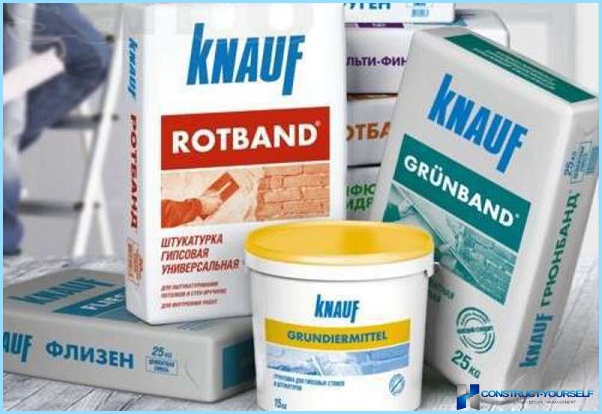
The calculation though is tied to a specific geometry of the wall, but comes primarily from considerations of the use of quality components. In some cases, as masters and Amateurs are widely used in numerous synthetic additives that increase the amount of air pores in the mortar to improve the heat insulation properties. Thus, the consumption of cement and sand remains the same while the volume or flow of plaster material is reduced by 18-20%.
On the contrary, use as fine aggregate instead of sand sand normal or large grain leads to increased shrinkage and increased density of plaster. Therefore, choosing a dry mixture, you should carefully study its composition, first of all, information about the presence of various modifying additives.
Conclusion ↑
If you have some doubts on the reliability of the flow rate of the plaster, you can always check the resulting value using one of the many online construction calculators.


